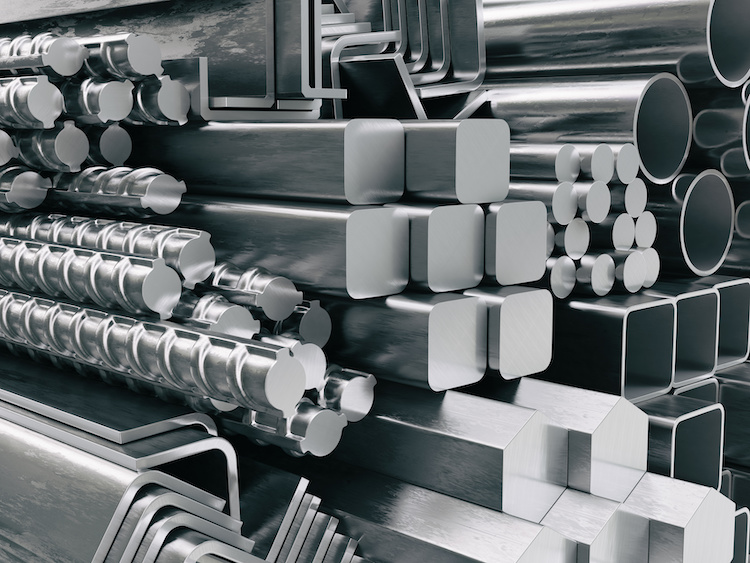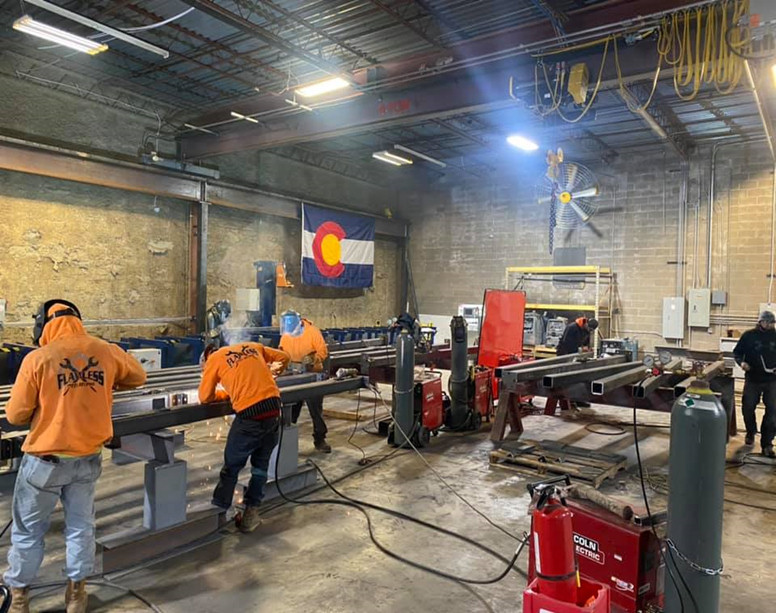Metal Fabrication Melbourne: Precision Design for All Demands
Metal Fabrication Melbourne: Precision Design for All Demands
Blog Article
Innovative Patterns in Steel Construction: Enhancing Longevity and Accuracy
In the realm of steel fabrication, the search of toughness and precision has brought about a wave of cutting-edge patterns that are reshaping the sector. From improvements in welding innovations to the integration of robot automation in construction processes, the landscape of steel manufacturing is progressing quickly. High-strength alloy development, paired with the use of 3D modeling and simulation software program, is pressing the boundaries of what is attainable in regards to architectural integrity and accuracy. Furthermore, the growing focus on lasting practices in steel production is not just driving efficiency yet also promoting a much more ecologically mindful approach to manufacture. These trends are not just forming the here and now however additionally preparing for the future of steel construction, guaranteeing more enhancements in toughness and accuracy.
Advanced Welding Technologies
In the world of steel construction, the fostering of sophisticated welding technologies has considerably reinvented the market's technique to attaining premium top quality and accuracy in architectural welds. Advanced welding modern technologies, such as laser light beam welding and rubbing mix welding, have actually arised as game-changers in the field. Laser beam welding employs a focused laser beam to sign up with metal parts with amazing precision and rate, making it suitable for elaborate layouts and slim materials. On the various other hand, friction mix welding develops exceptionally strong bonds by mechanically intermixing the molecules of the products at the joint, removing the demand for thawing the metal. These innovations provide numerous benefits, consisting of decreased heat-affected zones, very little distortion, and improved mechanical residential properties in the welded joints. By leveraging these advanced welding techniques, steel producers can raise the toughness, strength, and precision of their architectural welds, meeting the progressively requiring needs of contemporary building jobs.
Robotic Automation in Manufacture
Welcoming robotic automation has actually ended up being a foundation of contemporary steel manufacture practices, enhancing procedures and improving performance across the market. Robots are transforming the way steel components are manufactured, supplying unequaled accuracy and speed while decreasing human mistake. These automated systems can manage recurring jobs with regular accuracy, resulting in better final result.
One key advantage of robotic automation in steel fabrication is the capability to function around the clock without fatigue, significantly raising production output. This constant operation decreases downtime and accelerates task timelines, eventually saving expenses for makers. In addition, robotics can be set to execute complex tasks that may be dangerous or challenging for human employees, enhancing safety and security in the office.
Moreover, robotic automation enables seamless integration with other digital innovations, such as computer-aided style (CAD) software and Internet of Things (IoT) systems (Alpha reo). This interconnected approach boosts interaction in between different phases of fabrication, optimizing operations and making certain real-time surveillance and control. As the steel fabrication market remains to develop, robotic automation sticks out as a transformative force driving performance and precision in making procedures

High-Strength Alloy Advancement
The improvement of high-strength alloy advancement in steel fabrication is improving the industry's method to improving product sturdiness and efficiency. High-strength alloys are crafted to exhibit premium mechanical homes, such as boosted tensile stamina, toughness, and rust resistance contrasted to traditional steel qualities. By incorporating these advanced alloys right into manufacture processes, makers can generate components that hold up against higher stress levels and rough atmospheres, resulting in even more dependable and durable output.
One key benefit of high-strength alloy advancement is the capability to lower material thickness without compromising architectural stability. This not only leads to lighter-weight elements however likewise contributes to set you back financial savings and enhanced effectiveness in construction and setting up procedures. The enhanced strength-to-weight proportion of these alloys enables for the design and building and construction of frameworks with higher load-bearing capacities while minimizing total weight.
3D Modeling and Simulation Software Program
Improvements in steel manufacture processes have been substantially pushed by the combination of innovative 3D modeling and simulation software tools. These devices allow producers to produce detailed digital designs of their tasks, allowing them to picture the final item with accuracy before any physical work begins. By simulating numerous anxiety elements, ecological conditions, and structural tons, producers can enhance designs for boosted durability and efficiency. In addition, 3D modeling and simulation software program streamline the manufacturing process by identifying possible issues early on, minimizing the requirement for costly rework and decreasing material waste.

Lasting Practices in Steel Manufacturing
Incorporating sustainable techniques right into steel production processes is necessary for lessening environmental effect and making sure lasting source accessibility. One essential sustainable practice is the adoption of energy-efficient technologies to reduce greenhouse gas emissions during the steel production process. This consists of utilizing renewable resource resources, such as solar or wind power, to power steel plants and carrying out energy-efficient tools to optimize power use.
An additional crucial element of sustainable steel manufacturing is the responsible sourcing of basic materials. This includes guaranteeing that the iron ore and various other sources used in steelmaking are obtained from ethical and eco-friendly sources. By advertising find out openness in the supply chain and sticking to stringent ecological standards, steel suppliers can lessen the unfavorable impacts of resource extraction on regional ecosystems and neighborhoods.

Verdict
To conclude, the innovative fads in steel manufacture such as innovative welding innovations, robot automation, high-strength alloy growth, 3D modeling and simulation software, and sustainable practices are enhancing the sturdiness and accuracy of steel products. These innovations are revolutionizing the steel construction sector by boosting top quality, effectiveness, and sustainability. It is clear that the future of steel fabrication exists in embracing these cutting-edge innovations to meet the needs of modern building and construction and manufacturing industries.
In the world of steel construction, the pursuit of resilience and accuracy has actually led to a wave of cutting-edge patterns that are improving the sector.In the world of steel fabrication, the fostering of cutting-edge welding innovations has actually substantially reinvented the industry's method to accomplishing exceptional high quality and accuracy in architectural welds. As the steel manufacture sector continues to evolve, robot automation stands out as a transformative force driving effectiveness and accuracy in producing procedures.
Additionally, reusing and recycling steel scrap view it and waste products play a substantial role in enhancing the sustainability of steel production. Alpha reo.In conclusion, the cutting-edge patterns in steel fabrication such as innovative welding modern technologies, robotic automation, high-strength alloy growth, 3D modeling and simulation software, and lasting methods are boosting the resilience and precision of steel items
Report this page